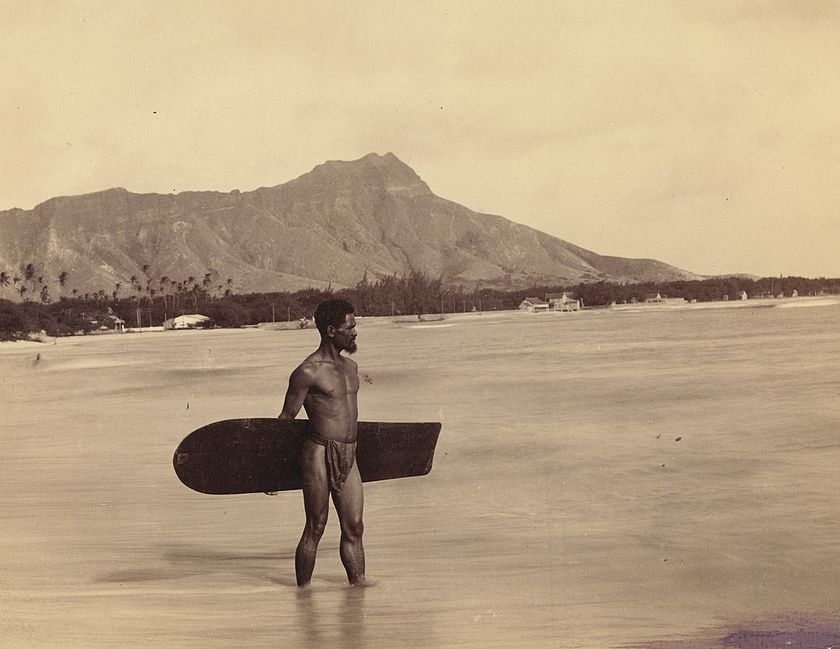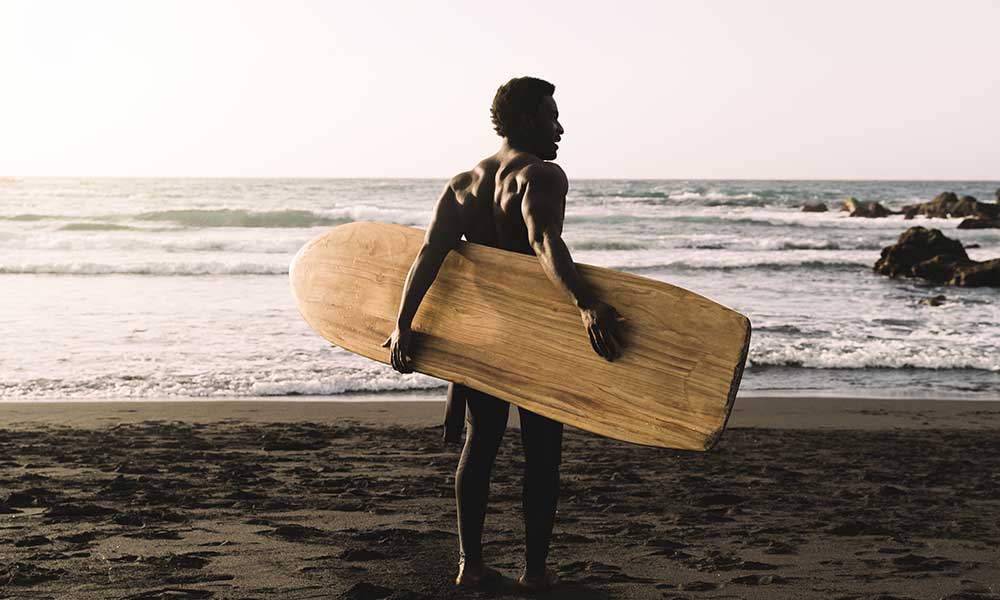The Alaia was an ancient Hawaiian surfboard that had a round nose and a squared tail.
Unlike modern surfboards, it didn’t have any fins on the underside of the board and as it was often made from koa wood, it was also quite heavy, averaging between 50 and 100 pounds.
The Alaia surfboard was often around 7 to 12 foot in length (similar to modern mid-length surfboards and longboards) and the fact that it was finless made it hard to control, requiring a skilled surfer to ride it in Hawaiian waves.
How Do You Pronounce “Alaia” Surfboard?
The correct pronunciation of “alaia” is Ah-LIE-ah.
How To Make An Alaia Wood Surfboard
Here are three videos that show you how to DIY shape your own alaia surfboard. You can see the template, dimensions, and the blank that is used.
Patagonia, Devon Howard and the Alaia
This video features Devon Howard talking about the alaia from the Patagonia store in Cardiff, CA where they sell alaia surfbaords and alaia blanks for you to shape your own board.
Here are a couple of resources to help you shape your own alaia from https://www.korduroy.tv/ which is featured in the video Patagonia.
From A defunct Alaia DIY site
The site doesn’t exist anymore, but the Alaia DIY YouTube channel has three how-to videos for alaia shapers.
This video has a great bluesy soundtrack and features surfing on the alaia on the back half of the video.
Alaia Surfboard Shaping Video
There are no explicit alaia sharping instructions in this video, but the alaia shaper’s process is well documented visually.
This video is probably more helpful to viewers who are already feeling comfortable shaping their own alaia surfboard.
The History of the Alaia Surfboard

Surfboards have existed in Polynesia for many hundreds and potentially many thousands of years.
We don’t have much recorded history from this part of the world, but we do know that surfboards were used to fish and travel by the ancestors of these beautiful islands.
Naturally, it wouldn’t have taken long for these practical activities to turn into sport, and surfboards may have been used on Hawaii since settlers first arrived there from other Polynesian islands.
The act of surfing on an Alaia board was known as “lala”, a Hawaiian word that translates to something like “a controlled slide on a wave”.
What are the Benefits of Alaia Surfboards?
Fiberglass and epoxy surfboards produce a lot of environmental toxins and concerns have been raised about the use of these materials.
Alaia surfboards made from sustainable paulownia have been posed as an environmentally friendly alternative.
Not only are the materials easy to acquire and safe to use, but the same is true for repairing them.
Notable Surfers that Have Used Alaia Boards
You can see the surfboard of Princess Kaʻiulani at Bishop Museum in Honolulu, Hawaii. Kaʻiulani, said to be an athletic young woman, had a 7.4ft surfboard made from acacia koa.
She died back in 1899, aged just 23, and her surfboards was passed onto her father’s estate and ended up at the museum.
The birth of modern surfboards all but killed off Alaia surfboards, but there was a resurgence during the 2010s.
Donald Takayama and Tom Wegener, two gifted shapers, helped to bring the alaia back, but acacia koa is rarely used today.
Wegener initially used prototypes made of paulownia, a fast-growing tree that is present throughout China and other eastern countries, and other surfboards have been made from redwood and balsa.
Here is a video of Jon Wegener talk about the alaia surfboard.
In 2009, Thomas Campbell directed The Present and showed how these surfboards were being used in the modern age.
The film featured performances from Rob Machado and Dave Rastovich and displayed all the beauty and difficulty of surfing alaias.
Campbell’s efforts helped to make the boards more popular among skilled surfers, but they are still a very niche product.







